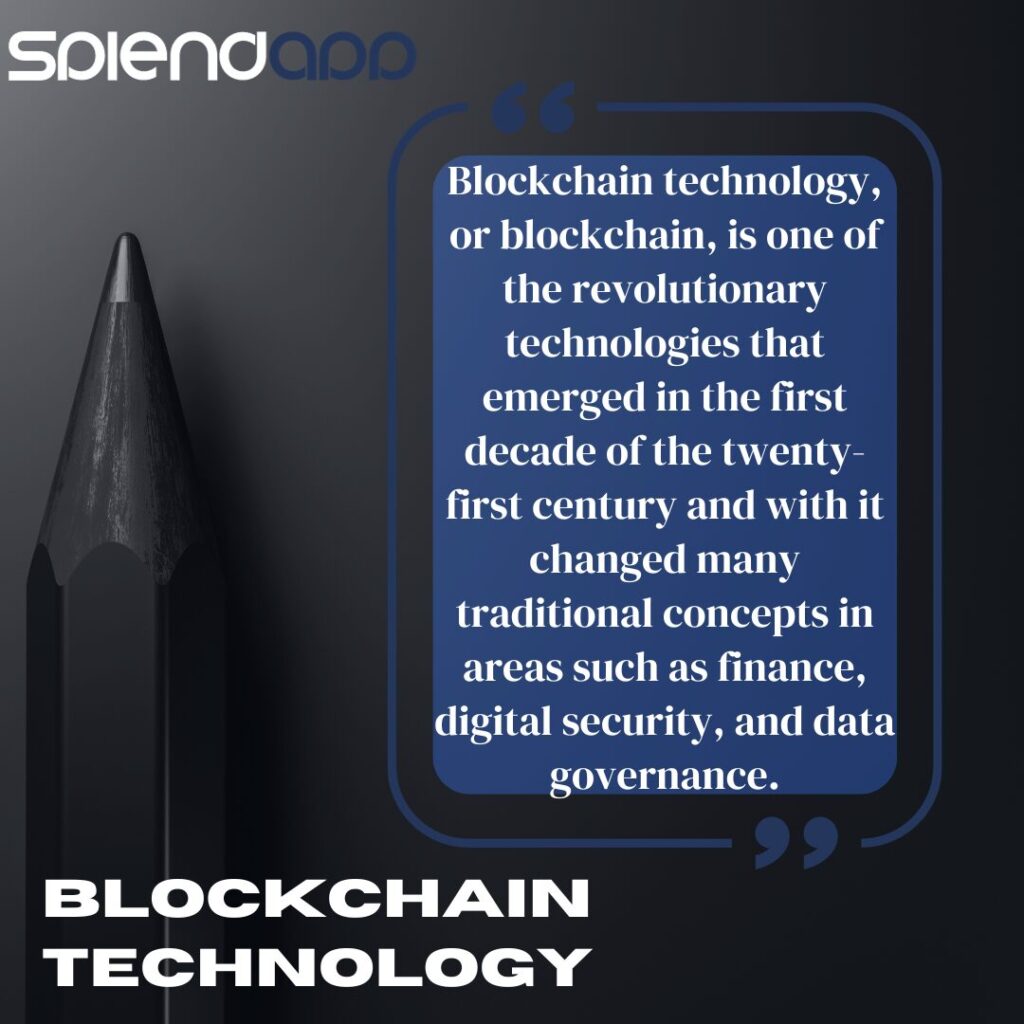

Blockchain technology, or blockchain, is one of the revolutionary technologies that emerged in the first decade of the twenty-first century and with it changed many traditional concepts in areas such as finance, digital security, and data governance. This technology is based on the idea of distributing data securely and transparently across a network of devices, rather than storing it in a central location.
Blockchain is a digital record of transactions, where each transaction is recorded in a “block” that connects to previous blocks, forming a connected, sequential chain. These blocks are protected by complex cryptographic systems, and their authenticity is verified by a network of devices participating in the system, known as nodes. This system makes it extremely difficult to change or delete information without being detected.
One of the most notable characteristics of blockchain technology is its decentralization, where there is no central authority controlling the data, which reduces the risk of manipulation and increases transparency. Blockchain also provides high levels of security due to its encrypted and distributed nature.
Since it emerged as the technology supporting the digital currency Bitcoin, blockchain applications have expanded to include diverse areas such as smart contracts, supply chain tracking, health systems, electronic voting, and many more. Other uses that take advantage of its unique features.

Blockchain technology works through a set of mechanisms and principles that ensure security, transparency, and decentralization. Here are the steps explaining how it works:
Transactions:
A transaction is created whenever someone wants to perform a transaction, such as transferring money or recording data.
Each transaction contains information such as the sender, receiver, value, and timing of the transaction.
Verification:
After the transaction is created, it is distributed to the blockchain network.
Devices in the network, called nodes, validate the transaction. The verification process includes verifying the authenticity of the digital signature and ensuring that the sender has the funds or rights necessary for the transfer.
Block configuration:
After verification, the transaction is added to a new block along with other transactions waiting for confirmation.
Each block contains a unique number known as a hash, the hash of the previous block in the chain, creating an unbroken chain of blocks.
Block mining:
To add a block to the blockchain, a complex cryptographic puzzle must be solved, a process known as mining.
The nodes that participate in mining are known as miners, and they use significant computing power to solve the puzzle.
The node that solves the puzzle first gets the right to add the block to the chain and is rewarded with digital currency.
Add the block to the chain:
Once the block is verified and the puzzle is solved, it is added to the blockchain.
The ledger is constantly updated and an updated copy of the blockchain is distributed to all nodes in the network.
Decentralization and transparency:
Blockchain is a decentralized network, which means that there is no central authority controlling it. Instead, control is distributed among all network participants.
Every transaction and block is available for public view, providing a high level of transparency.
Using these mechanisms, blockchain provides a secure and transparent environment for conducting transactions and storing data in a way that makes it difficult for any party to manipulate or change it unauthorizedly.
Blockchain technology holds great importance in many fields and offers revolutionary advantages compared to traditional systems, and these are some of the most prominent aspects of its importance:
Security: Blockchain offers a high level of security due to its encrypted and distributed nature. Each block is connected to the previous and subsequent blocks, making it very difficult to change information without detection.
Transparency and Accountability: Since the blockchain ledger is available to everyone participating in the network, it provides a high level of transparency. This enhances accountability in business and government.
Reducing costs: Blockchain reduces the need for intermediaries such as banks and verification companies in many operations, reducing the fees and costs associated with these services.
Efficiency and speed: Blockchain allows transactions to be conducted much faster compared to traditional systems that may take days to verify and settle.
Decentralization: Instead of relying on a central authority, blockchain distributed control across an entire network of devices, reducing the risk of central failure and attacks.
Smart Contracts: Blockchain enables the implementation of smart contracts that execute automatically when certain conditions are met, reducing the need for trust and verification.
Asset and supply chain tracking: Blockchain allows assets and products to be securely and transparently tracked across the supply chain, improving efficiency and reducing fraud and errors.
Resistance to censorship: The distributed nature of blockchain makes it difficult for regulators or governments to control data or transactions, ensuring greater freedom for users.
Innovation in multiple fields: Blockchain opens the door to innovations in areas such as healthcare, real estate, education, and many other fields.
After the discussion about Blockchain technology and its role in the application industry, we can say that this technology represents a real revolution not only in digital and financial currencies but also in how Application development and interaction With users and data. By providing a secure, transparent, and decentralized environment, blockchain has opened the doors to innovative applications that address many traditional challenges such as security, privacy, and efficiency.
Smart contracts, supply chain tracking, identity verification, and electronic voting are just some examples of how blockchain technology can bring about positive and significant change. As this technology continues to develop, we expect to see more advanced applications that address more complex issues and open new horizons for innovation and improvement.
However, blockchain still has challenges to overcome, including issues of scalability, energy consumption, and legal regulation. However, with continued research and development, this technology can provide solutions to these challenges and increase its impact in the application industry and other fields.
In short, blockchain technology promises a bright future as it enhances innovation, security, and transparency in the application industry and beyond, making it one of the most interesting and influential technologies of our time.